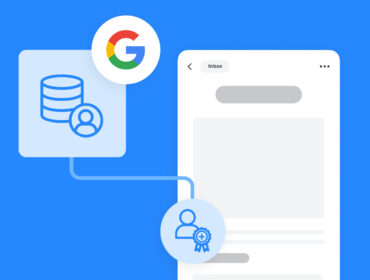Inside Amazon’s Approach to Data and People-Based Marketing
Amazon was responsible for 44% of all US ecommerce sales last year and net revenue was almost $178 billion, up from $135.99 billion in 2016. That’s a lot of cash. CEO Jeff Bezos, recently announced that Amazon Prime had exceeded 100 million paid Prime members globally – 64% of members reportedly make up U.S. households.
It’s no secret Amazon is a business worth taking cue from. And its success is derived by two things: customer data collection and people-based marketing. Here are a few reasons for its meteoric rise.
1. Give data a day job.
They’re using state-of-the-art technology to give data a day job. Its A9 group allows them to bridge the gap between marketing and advertising to sell its own products more efficiently.
In an AdExchanger article, Matt Keiser, CEO of LiveIntent, explains just how: “Amazon’s approach is steeped in all the hot-button issues for marketers, including closed-loop attribution, lifetime value and customer experience. Its efforts benefited from unfettered access to the underlying data and mirrored the Amazon ethos: a better experience for consumers while passing the efficiency and performance through to advertisers.”
Amazon is able to build an identity graph based on the intent and metadata collected which is critical to people-based marketing efforts. More on this here.
2. Collect customer data, and lots of it.
In 2016 Amazon had surpassed Google as the search engine specifically for shopping. Amazon’s peerless data bank of search and online purchasing behavior, mined from its hundreds of millions of customers, includes:
• Products viewed, (used to up-sell and cross-sell products based on a customer’s browsing or purchasing activity)
• When products are displayed (used to identify busy times of a day, of a week, of a month, of a year so that they can try to show promos at the busiest time to be noticed)
• Products purchased (used to recommend similar customers.)
• Contact and shipping information (used for demographic analysis.)
• Amazon Prime Member information (used to compare to other customer types)
• Review velocity and rank (used to track review stars, comments, sentiment, and the number of days it took from the time you purchased to write a review)
• Link click-throughs on Amazon emails (used to uncover insights into consumer behavior and better promote products)
• Selling history and buyer review information (used to rank products in its internal search)
• Accessibility, use, and referral sources (used to view user browsing patterns and site access to uncover when and where to advertise themselves to save money and make the highest profit)
Amazon collects and uses big data to drive customers to buy and buy again. In doing so, the brand gains organizational omnipresence, recaptures hidden profits, boosts operational inefficiencies, and serves up content customers want.
3. Put the customer first.
Amazon knows its peeps and you should too. People-based marketing is the now and the future of marketing. Keeping your eyes on the prize – i.e. customers – relies on answering:
• Who you want to reach
• What content resonates with them
• Where you reached them
• How your intervention affected their decisions and subsequent actions
4. Capitalize on lifetime value.
They approach data simultaneously at a granular and bird’s-eye level. Each customer’s buying habits, purchase history, frequency, spend, and other customer behaviors are tracked, analyzed, and acted upon. This creates a “360-degree view” of each customer so Amazon can deliver custom content and recommendations to capture more sales.
With so much data at its fingertips, it can easily rank a customer’s lifetime value – and prioritize customers who are ready to spend. Each customer is thought of in the long term, from primary loyalties to emerging needs that arise with each life stage.
5. Focus on quantitative data, with a human hand.
Amazon artfully uses its massive data sets to determine its business strategy. It focuses on data collection and analysis by pinpointing the metrics that provide a good picture of a customer and audience. One metric alone doesn’t have any value. By triangulating multiple data points, Amazon can hypothesize, test, and get a clearer picture of customers.
The retail world is complex and it’s getting harder and harder to turn customers into loyalists. But take a page out of Amazon’s book, and you’ll likely start seeing results.
Related Reads:
Will Amazon Buy A Consultancy Or Will Consultancies Learn From Amazon?
Platforms Need To Follow The Triopoly’s Playbook And Give Data A Day Job


